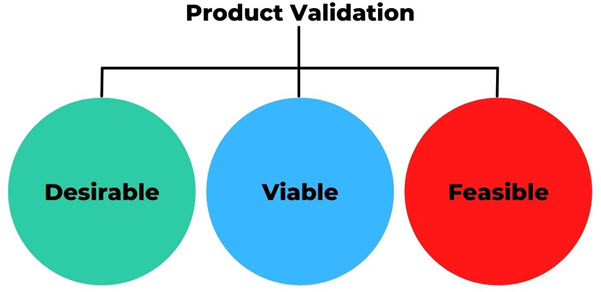
Product Validation: The Key to Developing the Best Product Possible
Last updated: January 11, 2024 Read in fullscreen view
- 18 Oct 2020
 How to use the "Knowns" and "Unknowns" technique to manage assumptions 21/989
How to use the "Knowns" and "Unknowns" technique to manage assumptions 21/989 - 21 Apr 2021
 Most frequently asked questions about Odoo ERP 16/1175
Most frequently asked questions about Odoo ERP 16/1175 - 01 Oct 2020
 Fail fast, learn faster with Agile methodology 13/973
Fail fast, learn faster with Agile methodology 13/973 - 10 Aug 2021
 Build A Marketplace Website with Odoo ecommerce 10/730
Build A Marketplace Website with Odoo ecommerce 10/730 - 12 Oct 2022
 14 Common Reasons Software Projects Fail (And How To Avoid Them) 10/504
14 Common Reasons Software Projects Fail (And How To Avoid Them) 10/504 - 20 Oct 2022
 Odoo roadmap for beginners and small businesses 9/1018
Odoo roadmap for beginners and small businesses 9/1018 - 10 Nov 2022
 Poor Code Indicators and How to Improve Your Code? 8/214
Poor Code Indicators and How to Improve Your Code? 8/214 - 19 Oct 2021
 Is gold plating good or bad in project management? 7/754
Is gold plating good or bad in project management? 7/754 - 13 Oct 2021
 Outsourcing Software Development: MVP, Proof of Concept (POC) and Prototyping. Which is better? 6/424
Outsourcing Software Development: MVP, Proof of Concept (POC) and Prototyping. Which is better? 6/424 - 06 Feb 2021
 Why fail fast and learn fast? 6/375
Why fail fast and learn fast? 6/375 - 28 Jul 2022
 POC, Prototypes, Pilots and MVP: What Are the Differences? 6/606
POC, Prototypes, Pilots and MVP: What Are the Differences? 6/606 - 01 Jan 2023
 Senior Odoo Business Developer - Job Detail 6/513
Senior Odoo Business Developer - Job Detail 6/513 - 01 Mar 2023
 Bug Prioritization - What are the 5 levels of priority? 6/207
Bug Prioritization - What are the 5 levels of priority? 6/207 - 01 Apr 2025
 How to Manage Social Media Marketing with Odoo 6/105
How to Manage Social Media Marketing with Odoo 6/105 - 07 Oct 2025
 Case Study: Using the “Messaging House” Framework to Build a Digital Transformation Roadmap 5/45
Case Study: Using the “Messaging House” Framework to Build a Digital Transformation Roadmap 5/45 - 01 Nov 2023
 Unlocking the power of Odoo 17 - What are the new and improved features? 5/328
Unlocking the power of Odoo 17 - What are the new and improved features? 5/328 - 08 Aug 2022
 Scale-up! The ultimate business game to learn business operations before you get started 5/521
Scale-up! The ultimate business game to learn business operations before you get started 5/521 - 31 Aug 2022
 What are the best practices for software contract negotiations? 5/215
What are the best practices for software contract negotiations? 5/215 - 05 Mar 2021
 How do you minimize risks when you outsource software development? 5/317
How do you minimize risks when you outsource software development? 5/317 - 14 Oct 2021
 Advantages and Disadvantages of Time and Material Contract (T&M) 4/789
Advantages and Disadvantages of Time and Material Contract (T&M) 4/789 - 14 Dec 2021
 Odoo - the Right Software for Your Digital Transformation? 4/390
Odoo - the Right Software for Your Digital Transformation? 4/390 - 10 Apr 2022
 Odoo Dealership Management 4/522
Odoo Dealership Management 4/522 - 12 Dec 2021
 Zero Sum Games Agile vs. Waterfall Project Management Methods 4/374
Zero Sum Games Agile vs. Waterfall Project Management Methods 4/374 - 04 Oct 2022
 Which ERP implementation strategy is right for your business? 4/278
Which ERP implementation strategy is right for your business? 4/278 - 03 Dec 2024
 CRM Solutions on the Odoo Platform 4/17
CRM Solutions on the Odoo Platform 4/17 - 29 Nov 2019
 Odoo Website Builder Allows You to Make Your Own Website 3/673
Odoo Website Builder Allows You to Make Your Own Website 3/673 - 18 Aug 2022
 What are the consequences of poor requirements with software development projects? 3/242
What are the consequences of poor requirements with software development projects? 3/242 - 01 Dec 2023
 Laws of Project Management 3/249
Laws of Project Management 3/249 - 05 Sep 2023
 The Cold Start Problem: How to Start and Scale Network Effects 3/167
The Cold Start Problem: How to Start and Scale Network Effects 3/167 - 10 Feb 2022
 Odoo Implementation Services - Let Us Be the Icing 3/343
Odoo Implementation Services - Let Us Be the Icing 3/343 - 08 Nov 2022
 Considerations in revolutionizing your business with Odoo 3/250
Considerations in revolutionizing your business with Odoo 3/250 - 18 May 2022
 Odoo Employee Contract Portal Self Service 3/617
Odoo Employee Contract Portal Self Service 3/617 - 23 Aug 2022
 How to Create Qweb Report in Odoo 16? 3/808
How to Create Qweb Report in Odoo 16? 3/808 - 31 Oct 2021
 Tips to Fail Fast With Outsourcing 3/375
Tips to Fail Fast With Outsourcing 3/375 - 18 Jul 2021
 How To Ramp Up An Offshore Software Development Team Quickly 3/516
How To Ramp Up An Offshore Software Development Team Quickly 3/516 - 12 Oct 2022
 Why is ODOO end-to-end business management software? 3/305
Why is ODOO end-to-end business management software? 3/305 - 08 Oct 2022
 KPI - The New Leadership 3/557
KPI - The New Leadership 3/557 - 23 Sep 2021
 INFOGRAPHIC: Top 9 Software Outsourcing Mistakes 2/411
INFOGRAPHIC: Top 9 Software Outsourcing Mistakes 2/411 - 17 Feb 2022
 Prioritizing Software Requirements with Kano Analysis 2/280
Prioritizing Software Requirements with Kano Analysis 2/280 - 03 Nov 2021
 7 phases of Odoo Implementation and Development: Can they be outsourced? 2/357
7 phases of Odoo Implementation and Development: Can they be outsourced? 2/357 - 17 Feb 2022
 10 services of Odoo Development for streamlining your business 2/382
10 services of Odoo Development for streamlining your business 2/382 - 13 Dec 2020
 Move fast, fail fast, fail-safe 2/292
Move fast, fail fast, fail-safe 2/292 - 28 Dec 2021
 8 types of pricing models in software development outsourcing 2/417
8 types of pricing models in software development outsourcing 2/417 - 28 Oct 2022
 Build Operate Transfer (B.O.T) Model in Software Outsourcing 2/361
Build Operate Transfer (B.O.T) Model in Software Outsourcing 2/361 - 09 Nov 2021
 Frequently Asked Questions about Odoo 2/381
Frequently Asked Questions about Odoo 2/381 - 10 Dec 2023
 Pain points of User Acceptance Testing (UAT) 2/416
Pain points of User Acceptance Testing (UAT) 2/416 - 19 Apr 2023
 A Deep Dive into Odoo: Benefits, Drawbacks, Strategic Fit, and Investment Models 2/205
A Deep Dive into Odoo: Benefits, Drawbacks, Strategic Fit, and Investment Models 2/205 - 01 May 2024
 Warren Buffett’s Golden Rule for Digital Transformation: Avoiding Tech Overload 2/188
Warren Buffett’s Golden Rule for Digital Transformation: Avoiding Tech Overload 2/188 - 09 Apr 2022
 Comparing Features for Odoo ERP with ERPNext 2/229
Comparing Features for Odoo ERP with ERPNext 2/229 - 10 Feb 2022
 Odoo Implementation - Basics of the QuickStart Methodology 2/406
Odoo Implementation - Basics of the QuickStart Methodology 2/406 - 09 Apr 2025
 Odoo Migration Best Practices: A Complete Guide to Upgrading Your ERP System 2/48
Odoo Migration Best Practices: A Complete Guide to Upgrading Your ERP System 2/48 - 12 Aug 2024
 Understanding Google Analytics in Mumbai: A Beginner's Guide 1/84
Understanding Google Analytics in Mumbai: A Beginner's Guide 1/84 - 15 Jul 2025
 Steps to Successful Odoo Implementation 1/81
Steps to Successful Odoo Implementation 1/81 - 26 Dec 2023
 Improving Meeting Effectiveness Through the Six Thinking Hats 1/205
Improving Meeting Effectiveness Through the Six Thinking Hats 1/205 - 05 Jan 2024
 Easy ASANA tips & tricks for you and your team 1/180
Easy ASANA tips & tricks for you and your team 1/180 - 01 Jan 2024
 Odoo: The Small Business Game-Changer — Cost Savings and Enhanced Productivity 1/83
Odoo: The Small Business Game-Changer — Cost Savings and Enhanced Productivity 1/83 - 11 Jan 2024
 What are the Benefits and Limitations of Augmented Intelligence? 1/434
What are the Benefits and Limitations of Augmented Intelligence? 1/434 - 19 Sep 2022
 Comparison between Odoo and SAP: It doesn't matter whether a cat is black or white, as long as it catches mice 1/176
Comparison between Odoo and SAP: It doesn't matter whether a cat is black or white, as long as it catches mice 1/176 - 18 Mar 2025
 Odoo HRMS Software for Efficient HR Management in Dubai Businesses 1/100
Odoo HRMS Software for Efficient HR Management in Dubai Businesses 1/100 - 04 Apr 2023
 Odoo: A Re-Birth for Enterprise Software 1/137
Odoo: A Re-Birth for Enterprise Software 1/137 - 16 Mar 2022
 Digital Transformation With Odoo: an ERP made for you as SME and grow with you? 1/154
Digital Transformation With Odoo: an ERP made for you as SME and grow with you? 1/154 - 19 Apr 2021
 7 Most Common Time-Wasters For Software Development 1/525
7 Most Common Time-Wasters For Software Development 1/525 - 19 Oct 2021
 The Workplace of the Future: Gamification to Encourage and Reward Employees 1/285
The Workplace of the Future: Gamification to Encourage and Reward Employees 1/285 - 19 Oct 2021
 Software development life cycles /628
Software development life cycles /628 - 06 Nov 2019
 How to Access Software Project Size? /236
How to Access Software Project Size? /236 - 25 Dec 2021
 Compare Odoo Studio vs QuickBase vs OutSystems /479
Compare Odoo Studio vs QuickBase vs OutSystems /479 - 18 Mar 2020
 Automate Recruitment with Odoo: Work smarter, not harder /299
Automate Recruitment with Odoo: Work smarter, not harder /299 - 08 Aug 2021
 XERO vs ODOO: Which fits your needs? /304
XERO vs ODOO: Which fits your needs? /304 - 08 Nov 2021
 Why Odoo is considered best for streamlining your business? /246
Why Odoo is considered best for streamlining your business? /246 - 07 Nov 2022
 The Future of Odoo Consulting /237
The Future of Odoo Consulting /237 - 12 Mar 2024
 How do you create FOMO in software prospects? /127
How do you create FOMO in software prospects? /127 - 06 Mar 2024
 [SemRush] What Are LSI Keywords & Why They Don‘t Matter /131
[SemRush] What Are LSI Keywords & Why They Don‘t Matter /131 - 02 Oct 2022
 Odoo: The Disruptor of Traditional ERP in the Age of AI and Blockchain /252
Odoo: The Disruptor of Traditional ERP in the Age of AI and Blockchain /252 - 19 Jan 2022
 TIGODOO - The leading player in the digital transformation market /335
TIGODOO - The leading player in the digital transformation market /335 - 01 Feb 2024
 Employee Attendance Using Camer AI /143
Employee Attendance Using Camer AI /143 - 03 Apr 2023
 Odoo ERP - "Swiss army knife" approach for all business solutions /148
Odoo ERP - "Swiss army knife" approach for all business solutions /148 - 01 Mar 2024
 Odoo Ecosystem - ALL-IN-ONE BUSINESS MANAGEMENT SOFTWARE /178
Odoo Ecosystem - ALL-IN-ONE BUSINESS MANAGEMENT SOFTWARE /178 - 14 Mar 2024
 Why should you opt for software localization from a professional agency? /117
Why should you opt for software localization from a professional agency? /117 - 11 Sep 2022
 Odoo - a product-market fit for a radical and meaningful transformation of SMEs in Japan /276
Odoo - a product-market fit for a radical and meaningful transformation of SMEs in Japan /276 - 25 Jul 2022
 Govern your Business with Odoo - One Solution To Many Challenges /253
Govern your Business with Odoo - One Solution To Many Challenges /253 - 08 Aug 2022
 Why is Odoo growing faster than other ERP software systems? /184
Why is Odoo growing faster than other ERP software systems? /184 - 07 Feb 2023
 Odoo Consulting Services in Vietnam /227
Odoo Consulting Services in Vietnam /227 - 01 Oct 2022
 Odoo 16 will Disrupt The ERP Mid-Market with stunning features /326
Odoo 16 will Disrupt The ERP Mid-Market with stunning features /326
Software development is an expensive process, and annual costs are continuing to rise—they reached more than $232 billion in 2019. Your best defense against mounting costs is proactively validating every new iteration of your product to understand which features add the most value for your end-users.
Continuous product validation is the key to developing the right product for your market and making sure your features are adopted by your users. Engaging in product validation early on in the development process means you direct your company’s time and funds strategically to create the best end product possible.
What Is Product Validation?
Product validation is a process that checks whether or not a product feature addresses the needs and pain points of current and potential customers. It’s a scientific approach to achieving and maintaining a product-market fit and a scalable way to conduct research faster and more efficiently.
In the same way a scientist tests a hypothesis, product validation lets you test whether your internal stakeholders’ assumptions about your product hold true in the real world. It relies on data gathered from your customers, market research, and the interests and needs of your target market.
Validation is not a one-time event. It’s an ongoing process that will last the full lifecycle of your product. Each time you set out to update or add a new feature, validate whether or not there is a market demand and if those changes meet the most urgent, high-impact need of your customer base.
Why Continuous Validation Leads to a Better Product
Failure is a real risk in product development (an estimated 95% of new products fail). Every successful product needs to solve a problem for customers—and validation acts as an external check on whether or not your product features do that effectively. If the answer is “no,” it’s much better to get that information as early in the development process as possible. That will save you from sinking a lot of time and resources into an unviable product feature.
The product validation process also points you toward features with a higher potential to provide value. In other words, validation doesn’t just test whether a feature is viable; it looks at whether your target audience is more or less likely to find this update valuable compared to others. Because the process tests your assumptions against real data, it takes some of the guesswork out of product development and reduces your risk.
How to Validate Your Product Features
As a best practice, start product validation as early as possible in the feature development process. Create a clear plan from the beginning that sets specific parameters for your research. Be as detailed as you can in your planning—this will keep you focused on gathering relevant, actionable data for your product development team.
Set the Scope of Your Product Research
First, determine the scope of your research. This means planning:
- What problem you’re trying to solve (and making sure your customers think it’s worth solving)
- Which features you’re testing as possible solutions, and how you’ll determine if they’re effective
- Where your data will come from and how large of a sample you’ll work with
- A deadline when your research will wrap up
Taking this step is crucial for sticking to your larger development schedule. It also keeps product research from becoming a drawn-out, overly complicated process.
As you determine your sample size and timeline, keep your company’s size and needs in mind. Sampling more customers will take longer, but a larger sample size may mean more robust informative results. Surveying fewer customers will gather less information, but the process will move more quickly. While large companies can take the time to sample hundreds of customers, smaller companies and startups can often work with data from as few as 15 to 20. If you’re not sure which sample size is right for your company, start small. Consistent results are valuable even if they come from a small number of customer inputs.
Gather Data and Customer Feedback
After you’ve determined the scope of your product validation process, it’s time to collect data from customers. Their feedback checks your company’s assumptions about your product—this data is the heart of product validation.
Surveys are an efficient way to gather data from existing and potential users because they collect a large number of subjective opinions your team can analyze and quantify. They’re also simple for your team to design and familiar to customers.
While surveys are a great way to collect customer data, they aren’t your only option. Your customer success department may already have customer feedback on requested features, suggestions, or common problems. They may have noticed a trend among churned customers who were all looking for a certain feature or functionality. If collecting and organizing feedback is part of your company’s customer success process, you can share that information cross-departmentally to make sure that everyone on your team understands your customers’ needs.
As you develop your data gathering process, ensure it’s organized and streamlined from the beginning. Your team should be able to get an overview of your customers’ overall feedback while also having the option to drill down into specifics for more context if needed.
Analyze Your Findings and Apply Them to Development
After you’ve collected data, it’s time to analyze what you’ve found and tie it into your product development process.
Based on the results of your survey and other sources of data, some trends should emerge. The findings you uncover depend wholly on the questions you ask (which is why it’s so important to be purposeful when you plan your research process), but you may learn:
- Some proposed features are more popular, but others may have a higher potential for adoption: Customers may agree that a proposed feature sounds exciting, but data showing how likely they are to use it points to a higher potential for adoption.
- Certain changes to your product can have an outsized impact on your revenue: If all of your largest accounts are on board with the same feature, that points to an area of opportunity.
- What your customers really want (even if they’re not sure themselves): Your customers may not always know exactly what they’re looking for, but you can gain some interesting insight by looking for connections in your data. If some users are asking for export capabilities, for example, while others want a data visualization dashboard, the real problem could be that your reporting functionality isn’t sufficient.
3 Tips to Gather Better Product Validation Data From Your Customers
Product validation can feel more streamlined if you think of it as a collaborative process with your customers. That means taking steps to reduce barriers that might keep them from participating. You’ll get better buy-in (and better data) by making the product validation process as simple as possible for your end-users.
Create Straightforward Surveys
You want your customers to participate in your research, so make it easy and intuitive for them to do so. When you’re creating your surveys, take extra steps to avoid some common mistakes and follow best practices, like:
- Writing simple, straightforward questions to make sure customers understand what you’re asking
- Avoiding biased or leading questions that point customers in a specific direction, which will taint your research results
- Making sure your survey website or landing page offers a positive user experience (and consider making it mobile-optimized to meet your customers where they are)
Finally, check to be sure your survey questions ask for actionable information from your customers. If you’re interested in checking whether a new feature has a high potential for adoption, for example, ask customers how often they’ll use it (not just how they feel about it).
Add a Comment Field for Open-Ended Responses
No matter how well you craft your surveys, customers will occasionally need room to add more context. Add comment boxes where people can share more of their thoughts about your proposed features or the survey itself.
This data can provide extra insights into your proposed product features. Customer comments may also alert you to problems with your survey questions—if users feel they need to add a lot of extra nuances to get their true opinion across, you may need to rework your survey or add more questions.
Describe Product Features in Understandable Terms
When you’re asking about different product features, describe them in a way that’s understandable to someone outside of your company. Avoid using overly technical terms your customers may not understand, but don’t lean too hard on flowery language either.
Instead, keep it brief: offer a short description of the benefit your feature provides to your customers and include one or two points describing what they can use it to do and how it will solve their problem. You want to present your features in a neutral but informative way, leaving enough room for customers to generate their own opinions.
Keep Validating Your Product Features
The first time you validate a feature, keep detailed track of how the process went. Make a note of how long each step took your team, any hiccups you encountered along the way, and what you learned from your customers. Streamline where you can, and use that process as a general template next time you consider a new feature for your product.
Making the product validation process part of your standard development methodology will prevent you from assuming you understand customer needs, ensuring instead that you’re always able to iterate and keep on solving problems no matter how they change over time. It’s an important part of product development, regardless of whether you’re in an early stage or working with a final product.
Via uservoice







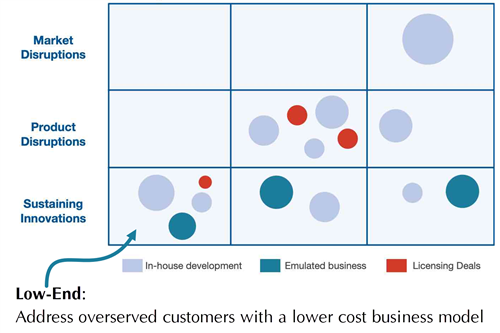

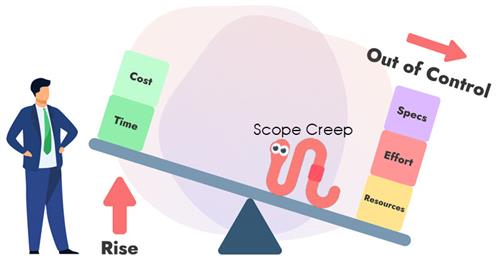


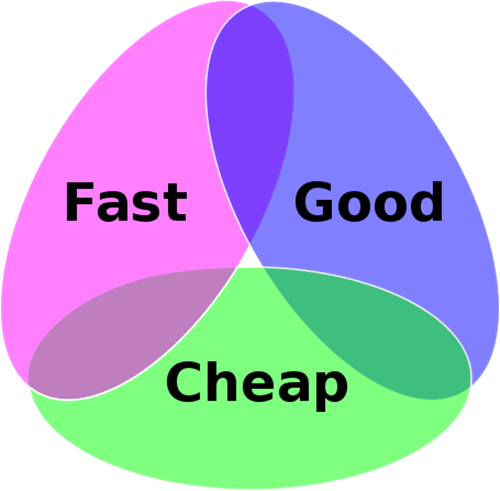







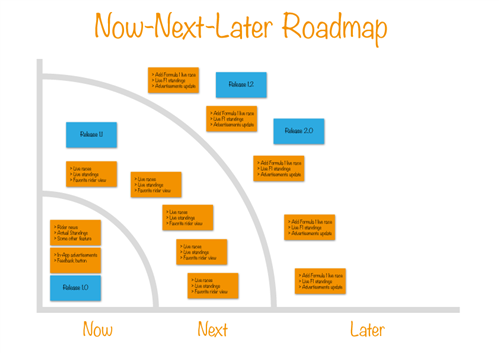














 Link copied!
Link copied!